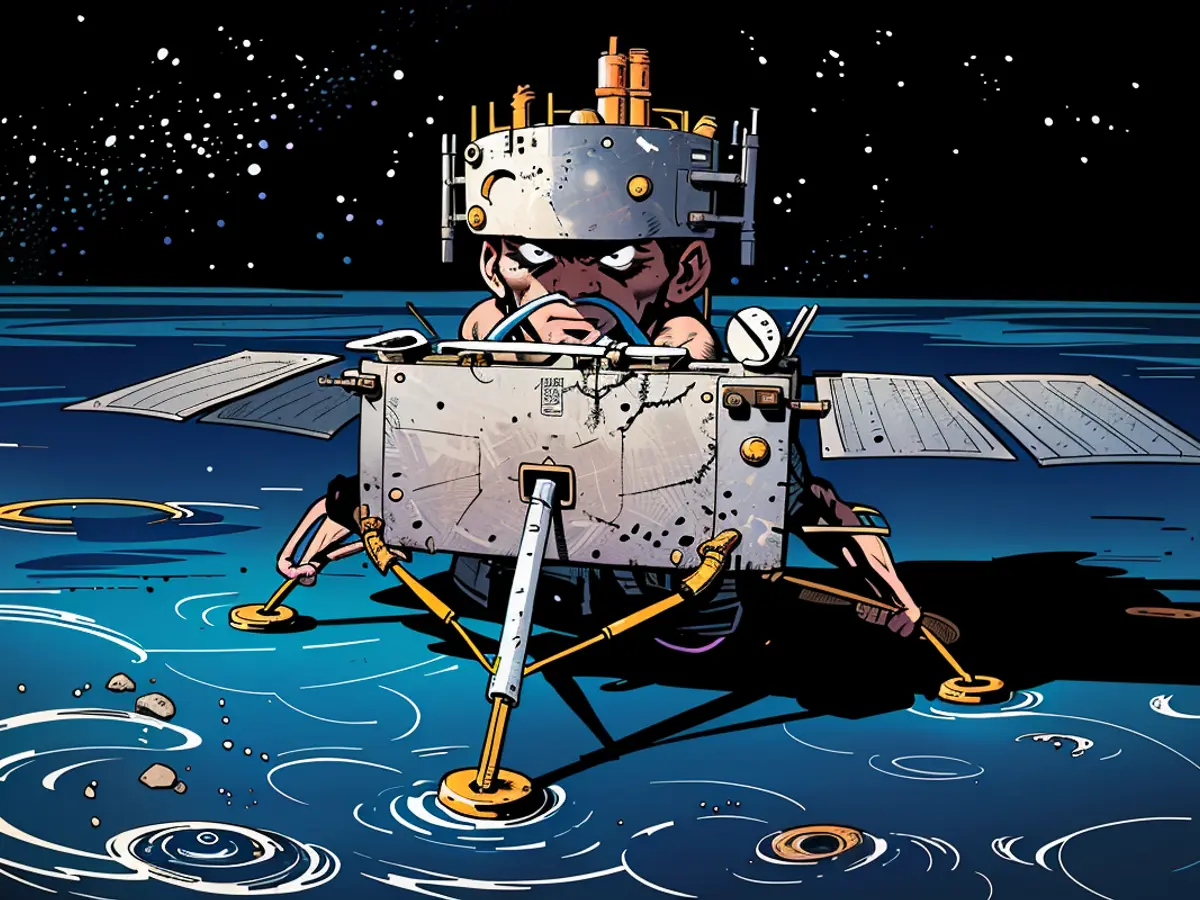Exploration of outer space - Chinese "Chang'e" spacecraft departs moon carrying rocks
China successfully collected and transported rock samples from the moon's far side with their Chang'e-6 probe. The ascent module with the samples lifted off and reached its planned lunar orbital position yesterday (Beijing time), as confirmed by the National Space Administration (CNSA). The probe had used a drill to gather samples from beneath the moon's surface and scooped up rocks on the lunar surface itself.
Reports also indicated that the onboard instruments, including some provided by the European Space Agency (ESA) and France, functioned perfectly. To mark the achievement, China unfurled their national flag.
Tackling high temps and communication barriers from the lunar far side
The mission's success came despite the difficulties associated with the far side of the moon's high temperatures and the challenge of launching from its surface. The ground control center on Earth could not maintain a direct connection due to moon location, relying instead on the relay satellite "Queqiao-2". The ascent module had to align itself for takeoff without instruction from the ground.
Now, the space capsule is scheduled to dock with the lunar orbiter and the return vehicle, after which it will embark on its journey back to Earth, as per CNSA. Landing is tentatively set for around the end of June in China's Inner Mongolia province – the first time humanity will have moon rocks from the remote side of the moon back home.
A crater of great interest to lunar researchers
In early May, Chang'e-6 was launched from the Wenchang Space Launch Center on Hainan Island, southern China, and reached the moon's orbit shortly afterwards. It then circled the moon to find the ideal time and location for the landing.
Sunday saw the probe arriving at the largest and oldest impact crater on the moon, the South Pole-Aitken Basin's crater. This region has long interested scientists as it could offer insights into the formation of the moon, Earth, and even the early stages of the solar system.
Moon landings are notoriously difficult endeavors. Recent failures by India, Israel, Japan, and Russia to land on the moon highlight the challenges involved. The moon is a focus for many nations as they seek to unlock its potential valuable resources.
China has poured billions of dollars into its demanding space program for years now, aiming to catch up with the US in this realm. By 2030, China plans to send a manned mission to the moon.
(Input formatting preserved)
List
- Item 1
- Item 2
Link
Read also:
- The European Space Agency (ESA) provided instruments for the Chang'e-6 probe, which collected rock samples from the moon's far side.
- Yesterday, China's Chang'e-6 ascent module, carrying lunar rock samples, reached its planned lunar orbital position.
- The successful moon landing by China's Chang'e-6 probe involved gathering rocks with a drill and scooping up samples on the lunar surface.
- The upcoming journey of the Chang'e-6 space capsule includes docking with the lunar orbiter and the return vehicle before returning to Earth with moon rocks.
- The location for the return of the Chang'e-6 space capsule is tentatively set for around the end of June in China's Inner Mongolia province.
- Scientists are particularly interested in the South Pole-Aitken Basin's crater, which the Chang'e-6 probe visited, as it could offer insights into the formation of the moon, Earth, and the early stages of the solar system.







